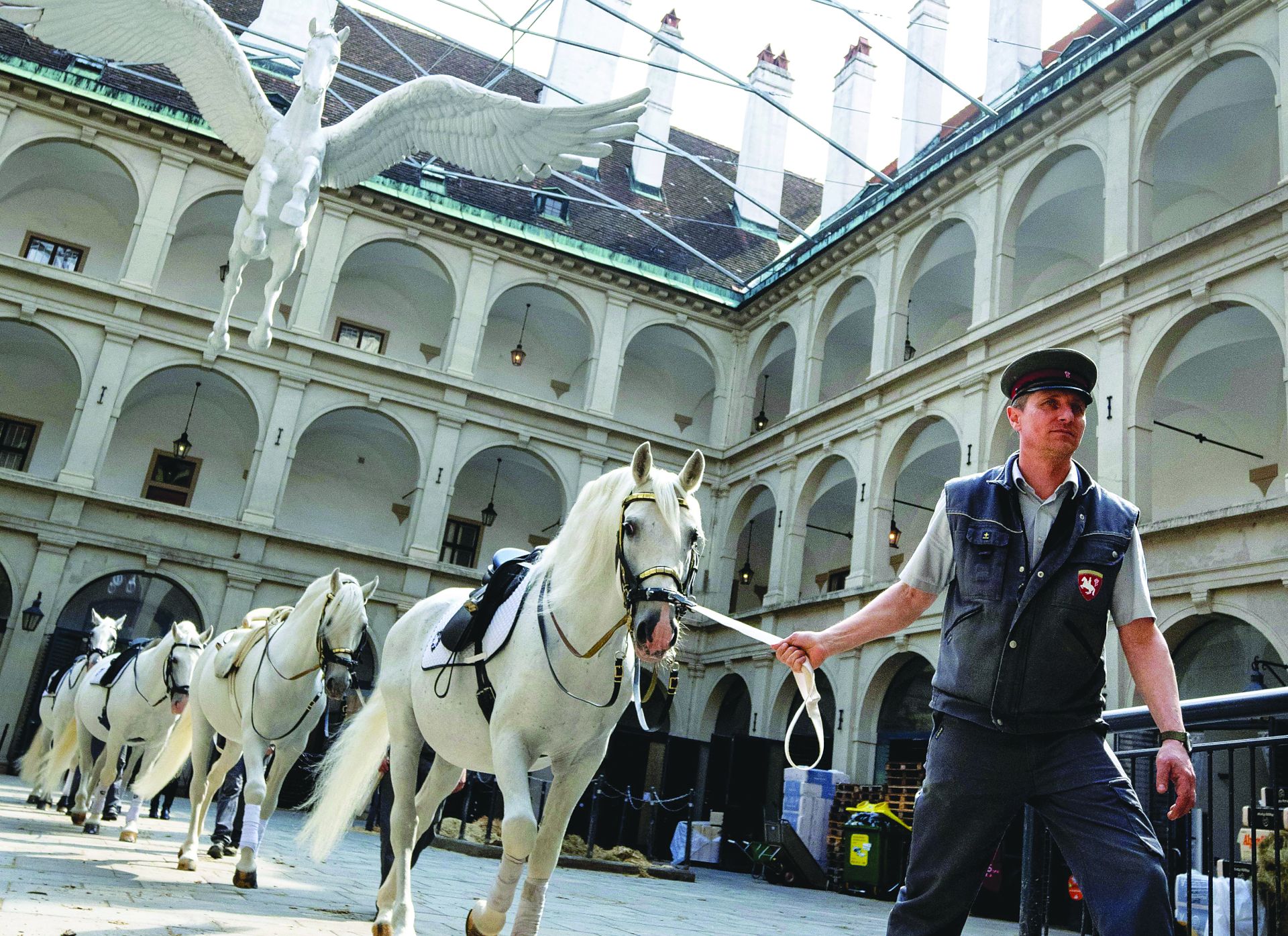Listen to this story
I smell them before I see them. Even as I’m surrounded by the bustling city life of Vienna, the smell of horses is unmistakable. It’s the smell of my childhood — a smell I’ve known my whole life. One whiff and I am back on the farm in Arkansas, a little girl in a big western saddle. Another deep breath, and I am soaring over jumps at a Los Angeles ranch. But I am not on the farm or the ranch now; I am in the heart of one of Europe’s great capitals. I look down to see straw strewn among the cobblestones as though I have slipped through time. I’m close, I think, as the smell gets stronger. Suddenly, I hear a neigh.
Prized by emperors, the Lipizzaner breed has been the glittering, shimmering diamond of the equine world — and, more specifically, Vienna — for centuries. Many consider them to be the perfect horses, with their docile temperaments, ability to concentrate and small builds that enhance their agility. But they are also beautiful. Bearing coats so white they seem to glow, Lipizzaners have long Roman noses, strong, arched necks and muscular shoulders. They are like beholding Pegasus, if he had shed his wings and come to live among mere mortals. Create a free account to continue reading Already a New Lines member? Log in here Create an account to access exclusive content.



